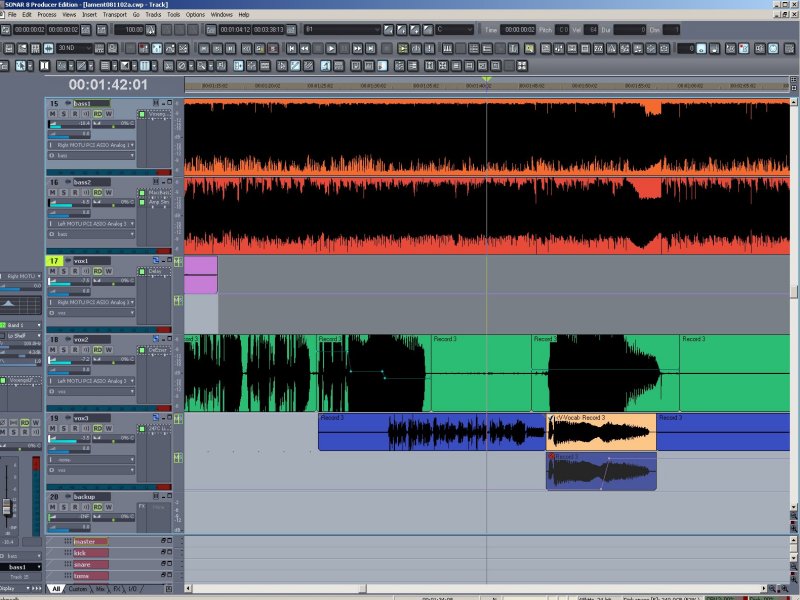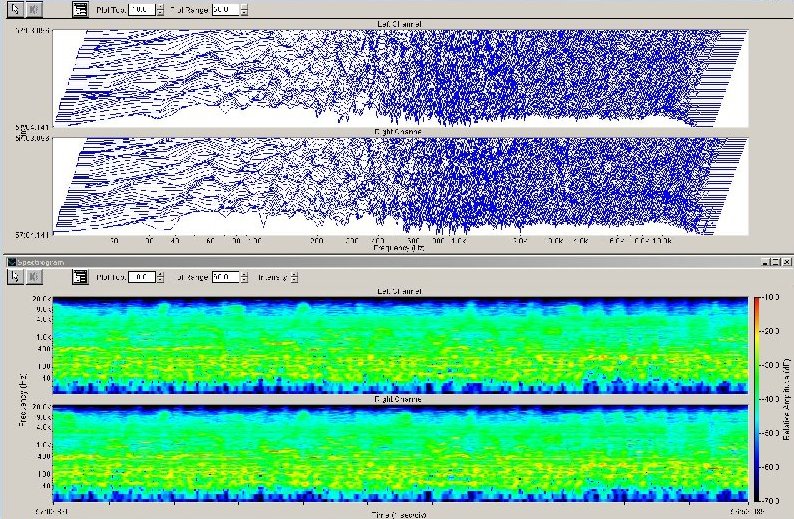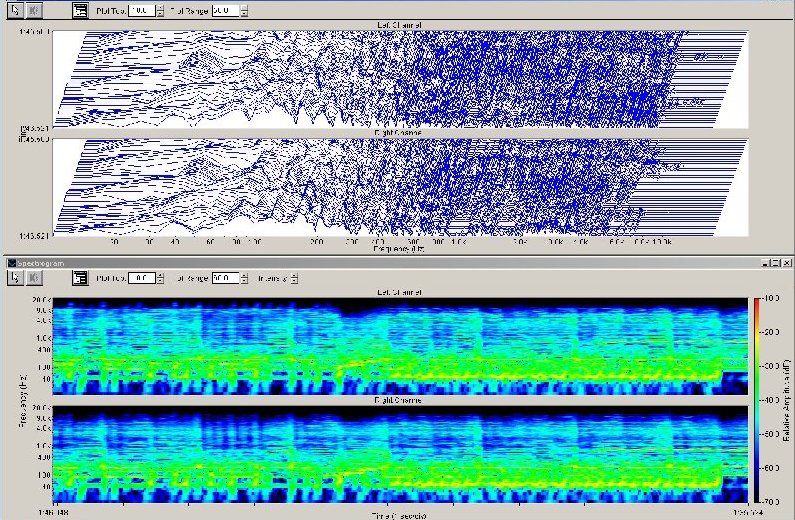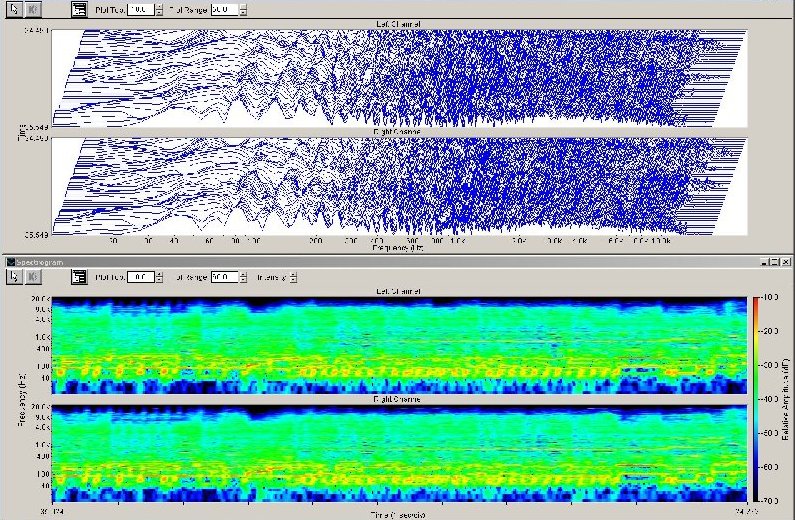
Shown on the left is a screenshot of a few of the tracks.
As shown, esp. the green vox2 track, it was apparent that the ADAT contents were not the most friendly to remix.
Recall these are dumped digitally, we verified the tracks thru my test gear on the analog output of the ADATs - those in vox2, were indeed clipped as shown.
Notice the orange bass tracks above it, to the right of the Now cursor. Significant asymmetry, and DC offset issues made this even more difficult.
Even still, with a bit of processing I was able to obtain a product significantly better than the original CD audio.
And yes, those of you that know, that's a V-Vocal clip. But I must mention those were few and far between. In fact, I think less than a dozen small snippets on the entire CD were corrected like this - a lot less than other mixes I've done in the past. Much less. In fact the majority of the songs had no alteration of Tony's vocals at all.

To the left is the screen grab from the secondary machine I use which runs spectral 3D waterfall plots and a running spectragram.
This is an example of one of the more recent metal albums, shown as a reference - this is Rob Halford's Resurrection - The One You Love to Hate - about in the middle of the chorus where it's crankin'.
The Halford CD was mastered by George Marino at Sterling Sound:
http://www.sterling-sound.com/epk.php?e=george&c=en
Note the even distribution of spectra on both the 3D plot and the spectragram.

Shown to the left here is the original Curse title track, captured during and immediately after the lyric "...dwell in the shadow of the tower..." where it crunches - the exact part in the above sample MP3 file:
http://www.ajawamnet.com/ajawam2/ttdsamp/scurseorig.mp3
Note the uneven dispersion of the spectra, and the lack of any activity above 8K.

Now shown on the left is the exact same part, but remixed and remastered:
http://www.ajawamnet.com/ajawam2/ttdsamp/scurse.mp3
Note the improvement of the spectral content as it more closely matches the Halford sample.
Also note the additional effect to have the "toweeeerrrrr" hang over the altered guitar chords.
I couldn't help myself... trying for the aural equivalent of of a video pull back as Tony stands next to a large castle/tower...